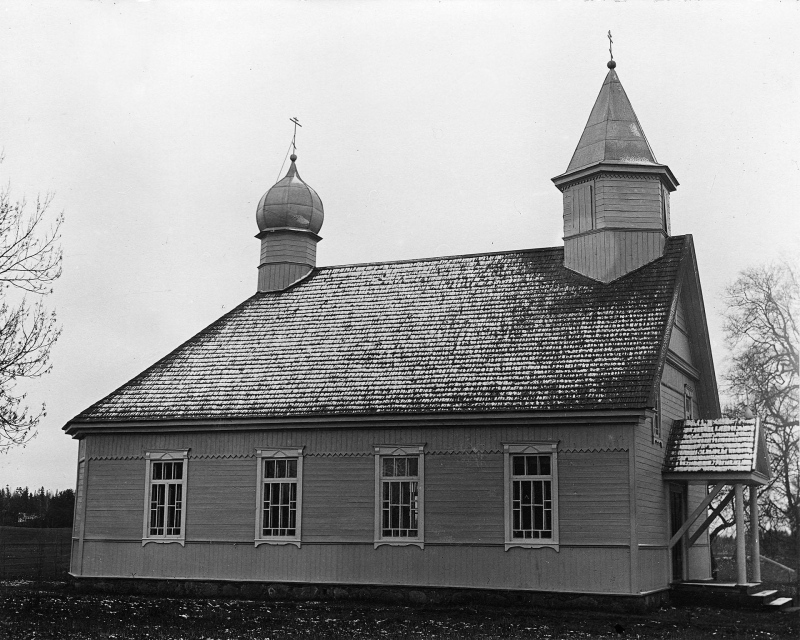One of the lead motifs of Kristaps Epners' art is the return to the creation of the world, where purity, clarity, and simplicity dwell. Here lies the correlation between an idea and the sense of the world, which, in unison, forms the milieu as well as the content, ensuring spiritual survival. Division and the fragmentation of perception, is replaced by unity of consciousness, permanence in time and space.
Maslova, an Old Believers' house of prayer in Latgale, has been miraculously preserved with its onion-shaped dome — a luxury that Old Orthodox sacred buildings were not usually distinguished for, since they were hidden. Bells were forbidden, and a rail was rung to call the congregation together. Maslova, whose toponym contains the word "butter" and the ghost of a prosperous place, is far from all political centers. In the 17th century, opposed to unification with the Greek rite, the Old Believers broke away from the official church and moved to remote parts of the Russian Empire. They did not go with open resistance, but rather with internal emigration. A part of them did not participate at all in the day-to-day world but maintained the traditional way of worship and remained secluded. In 1993, the Maslova house of prayer was left without a congregation. The house no longer has icons, but the paper flowers and pads for prayers have been preserved. There is a sense of familiarity in the room. We can hear the voice of Varvara Dorofeeva.
In the 17th century, the population of the war-and plague-ravaged territory of present-day Latgale was decimated and the region needed caretakers of the land. There, the Old Believers, tormented by persecution and happy to work the land, found a relative refuge for themselves. Once again, today, hatred and violence have erupted, where grains of wheat have become one of the symbols of the terror unleashed by Russia against the Ukrainian people.
Written by art historian and critic Anita Vanaga
 Old Believer's prayer house in Maslova, 1932.
Old Believer's prayer house in Maslova, 1932.